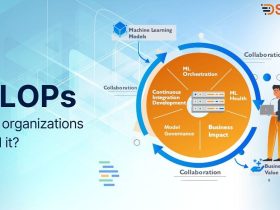Statistical analysis is a crucial tool for researchers and data analysts to draw meaningful conclusions from data. One commonly used statistical test is the t-test, which allows for the comparison of means between two groups. Whether you are a beginner or an expert in statistics, understanding t-tests is essential for accurate data analysis.
Understanding the Basics of T-Tests
T-tests are used to compare means of two groups to determine if there is a statistically significant difference between them. The basic idea behind a t-test is to calculate the t-value, which represents the difference between the means of the two groups relative to the variability within the groups. A higher t-value indicates a larger difference between the means, and a lower p-value suggests that the difference is statistically significant.
Types of T-Tests and Their Applications
There are several types of t-tests, including the independent samples t-test, paired samples t-test, and one-sample t-test. The independent samples t-test is used when comparing the means of two unrelated groups, such as comparing test scores between two different groups of students. The paired samples t-test is used when comparing the means of two related groups, such as comparing the pre- and post-test scores of the same group of students. The one-sample t-test is used when comparing the mean of a sample to a known or hypothesized population mean.
T-tests have a wide range of applications in various fields, such as medicine, psychology, business, and social sciences. For example, in a medical study, a t-test may be used to compare the effectiveness of two different treatments for a particular condition. In a business setting, a t-test may be used to compare the sales performance of two different products. Understanding the appropriate type of t-test to use in a given situation is crucial for accurate and meaningful analysis of data.
Conducting a T-Test: Step-by-Step Guide
Conducting a t-test involves several steps:
- Define the research question: Clearly state the research question or hypothesis that you want to test using the t-test.
- Select the appropriate type of t-test: Choose the appropriate type of t-test based on the nature of your data and research question.
- Collect and organize data: Collect data for both groups and organize it in a suitable format for analysis.
- Check assumptions: Check the assumptions of the t-test, such as normality of data and homogeneity of variances.
- Calculate the t-value and p-value: Use a statistical software or calculator to calculate the t-value and corresponding p-value.
- Interpret results: Interpret the results by comparing the calculated p-value with the significance level (alpha) set for the study. If the p-value is less than alpha, the results are considered statistically significant, indicating that there is a significant difference between the means of the two groups.
- Report results: Report the results of the t-test in a clear and concise manner, including the t-value, degrees of freedom, p-value, and interpretation of the results.
Interpreting T-Test Results
Interpreting the results of a t-test requires careful consideration of the calculated t-value and p-value.
Certainly! When interpreting t-test results, it’s important to consider the following:
- The t-value: The t-value represents the difference between the means of the two groups relative to the variability within the groups. A higher t-value indicates a larger difference between the means, while a lower t-value suggests a smaller difference.
- The p-value: The p-value represents the probability of obtaining a result as extreme or more extreme than the observed result, assuming that there is no true difference between the means of the two groups. A lower p-value indicates stronger evidence against the null hypothesis (i.e., no difference), and a p-value less than the significance level (often set at 0.05) is typically considered statistically significant.
- Confidence intervals: Confidence intervals provide a range of values within which the true population parameter (e.g., mean difference) is likely to fall. A narrower confidence interval indicates a more precise estimate.
- Effect size: Effect size measures the magnitude of the difference between the means and provides an indication of the practical significance of the results. Commonly used effect size measures include Cohen’s d and eta-squared.
It’s important to interpret the results in the context of the research question and the specific field of study. It’s also crucial to avoid overgeneralizing or drawing causal conclusions solely based on the results of a t-test. Additional statistical tests and analyses may be needed to support the findings and draw robust conclusions.
Common Misconceptions About T-Tests
There are several common misconceptions about t-tests that are important to address:
- Assuming causality: T-tests only establish a correlation or association between variables, not causality. Correlation does not imply causation, and other factors may be influencing the observed results.
- Ignoring assumptions: T-tests assume certain conditions, such as normality of data and homogeneity of variances. Ignoring these assumptions can lead to inaccurate results. It’s important to check and meet the assumptions before interpreting the results.
- Overreliance on p-values: While p-values are important, they should not be the sole determinant of statistical significance. Effect size, sample size, and practical significance should also be considered.
- Misinterpretation of confidence intervals: Confidence intervals should not be interpreted as the range of possible values for the true population parameter. They only provide an estimate of the precision of the sample estimate.
- Neglecting statistical power: T-tests can be influenced by the sample size and statistical power. A larger sample size increases the power of the test and the ability to detect a true difference between the groups.
Advanced Concepts in T-Tests for Experts
For experts in statistics, there are advanced concepts related to t-tests that can be explored. These include:
- Multiple comparison corrections: When conducting multiple t-tests or comparing more than two groups, the issue of multiple comparison arises. Techniques such as Bonferroni correction, False Discovery Rate (FDR) correction, or Tukey-Kramer correction can be used to control the family-wise error rate or the false discovery rate.
- Assumptions of non-parametric tests: T-tests assume normality of data and homogeneity of variances. However, when these assumptions are not met, non-parametric tests such as the Mann-Whitney U test or Wilcoxon signed-rank test can be used as alternatives.
- Bayesian t-tests: Bayesian t-tests provide a different approach to interpreting the results of t-tests by incorporating prior knowledge and updating probabilities based on the data. Bayesian methods can provide additional insights into the uncertainty of results and allow for more flexible interpretations.
Troubleshooting and Avoiding Pitfalls in T-Tests
While t-tests are widely used, there are some common pitfalls and challenges that can arise. Here are some troubleshooting tips to avoid these pitfalls:
- Sample size: A small sample size can lead to less reliable results, as the statistical power of the test may be low. It’s important to ensure an adequate sample size to increase the reliability of the findings.
- Assumptions: T-tests assume certain conditions, such as normality of data and homogeneity of variances. If these assumptions are not met, alternative tests or data transformations may be needed to obtain accurate results.
- Outliers: Outliers in the data can greatly impact the results of a t-test. It’s important to identify and handle outliers appropriately, such as through data cleaning or using robust statistical methods.
- Type I and Type II errors: Type I error occurs when a significant difference is detected when there is actually no true difference, while Type II error occurs when a true difference exists but is not detected. Balancing the significance level and statistical power can help avoid these errors.
- Interpretation: It’s crucial to interpret the results cautiously, considering the limitations of the study, the context of the research question, and the specific field of study. Avoid making overgeneralized conclusions or causal claims solely based on t-test results.
Conclusion
In conclusion, the t-test is a widely used statistical tool for comparing means between two groups. Interpreting t-test results involves considering the t-value, p-value, confidence intervals, and effect size, while avoiding common misconceptions and pitfalls. Advanced concepts such as multiple comparison corrections, non-parametric tests, and Bayesian methods can provide further insights for experts in statistics. Troubleshooting tips and careful interpretation of results are essential for robust and meaningful conclusions. By understanding the intricacies of t-tests, researchers and practitioners can utilize this statistical technique effectively in their studies.












Leave a Reply